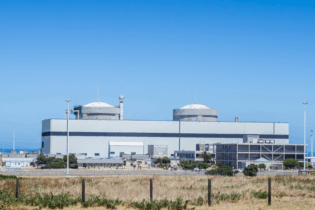Academics from the University of Cape Town (UCT) joined a network of 450 scientists and industry leaders from around the world in Lausanne, Switzerland to drive forward critical research into making concrete net zero.

UCT joins the global community of scientists working to decarbonise concrete
Concrete and sustainability
Concrete is the most used man-made product and the Innovandi Global Cement and Concrete Research Network (GCCRN) annual gathering met to drive the decarbonisation of concrete for a more sustainable future.
UCT, through its Concrete Materials & Structural Integrity Research Unit (CoMSIRU), was represented by Emeritus Professor Mark Alexander and PhD scholar Areej Gamieldien.
Gamieldien presented her current research that addresses recycling construction and demolition waste into useful materials. CoMSIRU is the only African entity represented in the GCCRN.
Looking to a better tomorrow
Professor Alexander said: “This gathering brought together top researchers and research students from around the world, to deliberate on how to make cement and concrete – among the most environmentally impactful materials in the world – more suitable for construction moving into the future with the goal of net-zero carbon by 2050.”
Concrete is an essential material for modern infrastructure, including homes, hospitals, bridges, tunnels, roads and so much more. Its universal use accounts for 7% of the world’s carbon emissions.
The Swiss Federal Institute of Technology ( EPFL) hosted the event. Researchers from South East University and Wuhan University in China, the University of Toronto, the Indian Institute of Technology in Delhi, UCT, Imperial College London and the University of São Paulo all attended.
Research topics discussed during the week included the use of AI in decarbonisation; new materials and processes for manufacturing cement, including sourcing and improving the use of alternatives to clinker (the most carbon-intensive element of the manufacturing process), as well as further development on the use of calcined clays; concrete recycling; the use of renewable energy and kiln electrification; and further development of carbon capture, use and storage (CCUS).









